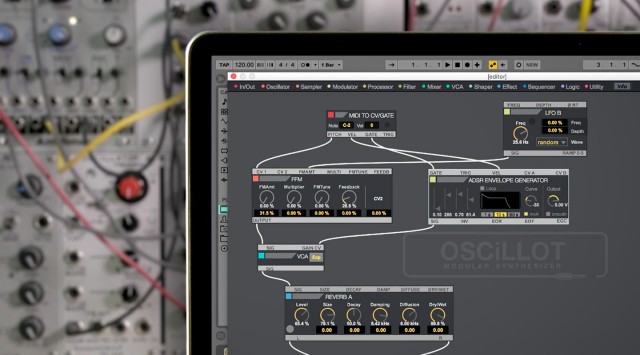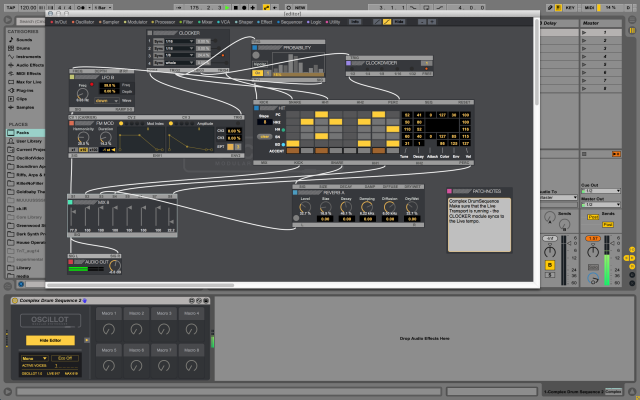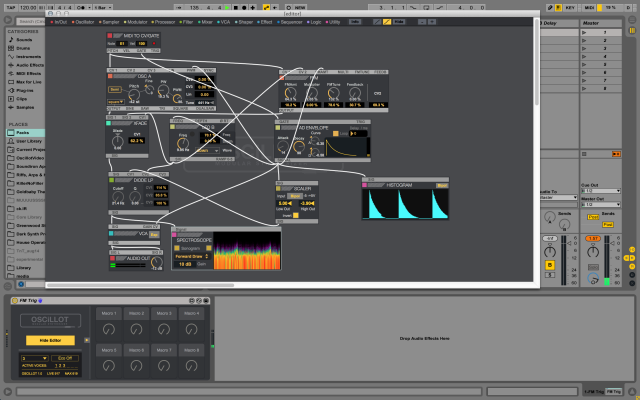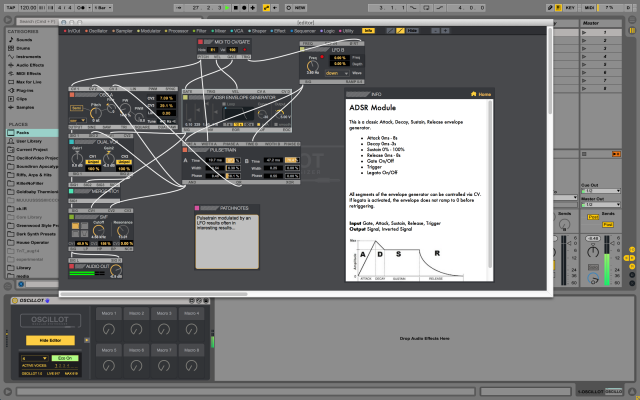The renaissance in modular synthesis has sent a strong message. Open-ended sound design, made by connecting sonic capabilities, can inspire musicians’ imagination.
Now, part of the joy of racks of modular gear is the chance to feel these connections in your hand – plugging cables, turning knobs. But that doesn’t mean that the required hardware is always the most convenient or accessible way to work. Why not have the same sorts of powers in your laptop, too? And why not work in an environment that is itself already modular? And why not choose between using just software or connecting your software to hardware?
If you’ve ever asked those questions, OSCiLLOT might be for you. From the lovely Max development house Max for Cats, OSCiLLOT is a toybox full of useful sound-making modules.
This isn’t a faux hardware modular – think of it more like a toolset of Ableton-ish soundmakers (from drum machines to convolution reverbs to synths) that build on their digital construction – but that you can use in the sorts of ways you might use hardware.
Running software alone has some benefits. You only need a hundred bucks, assuming you’ve got Live Suite (Max for Live is required). You don’t run out of cables. You don’t run out of space.
But this software will also play with hardware if you’ve got it. With compatible audio interfaces, you can route signal in and out of your computer to analog modular hardware, too, taking advantage of all the Eurorack goodness we saw at NAMM. (CDM has a round-up to make sense of all that coming soon, by the way – we figured you already had seen the news, but could use a handy field guide that brings it together.)
There’s a lot in this package:
Oscillators
Filters
Mixers
Modulators
Amplifiers
Sequencers
With those, you can build, say the makers, “FM, additive, or subtractive synthesizers, as well as filters, convolution reverbs, mixers, frequency shifters, sequencers, drum machines, and compressors” – and more from there.
There are already some pre-patched instruments and effects. You can use them as presets, or start tearing them apart to hack them into your own creations – a nice way to learn.
And in case you forget this is software, there’s also six-voice polyphony, patch annotation and saving, and the ability to neaten up or hide the display of patch cords.
Oh, yeah, one more thing – don’t forget, this is Max/MSP. So you aren’t limited to these modules. There’s an “SDK” that lets you build your own modules in Max.
All in all, this offers an interesting rival to running something like Native Instruments’ Reaktor inside Live. Reaktor has its own library of pre-built, higher-level modules – which, in turn, you can combine and re-patch and so on. Now, what’s unique in OSCiLLOT is that you can re-patch on the fly, modular style, and easily add in hardware. I can certainly see a place for each (or for more traditional Max patching and the like), really dependent on your workflow and aims.
This deserves a review. Guess I know what’s on my desk for February.
To add hardware, you need a DC-coupled audio interface. (Hmmm… time to do a new listing of which interfaces work.)
http://www.ableton.com/en/packs/oscillot/



